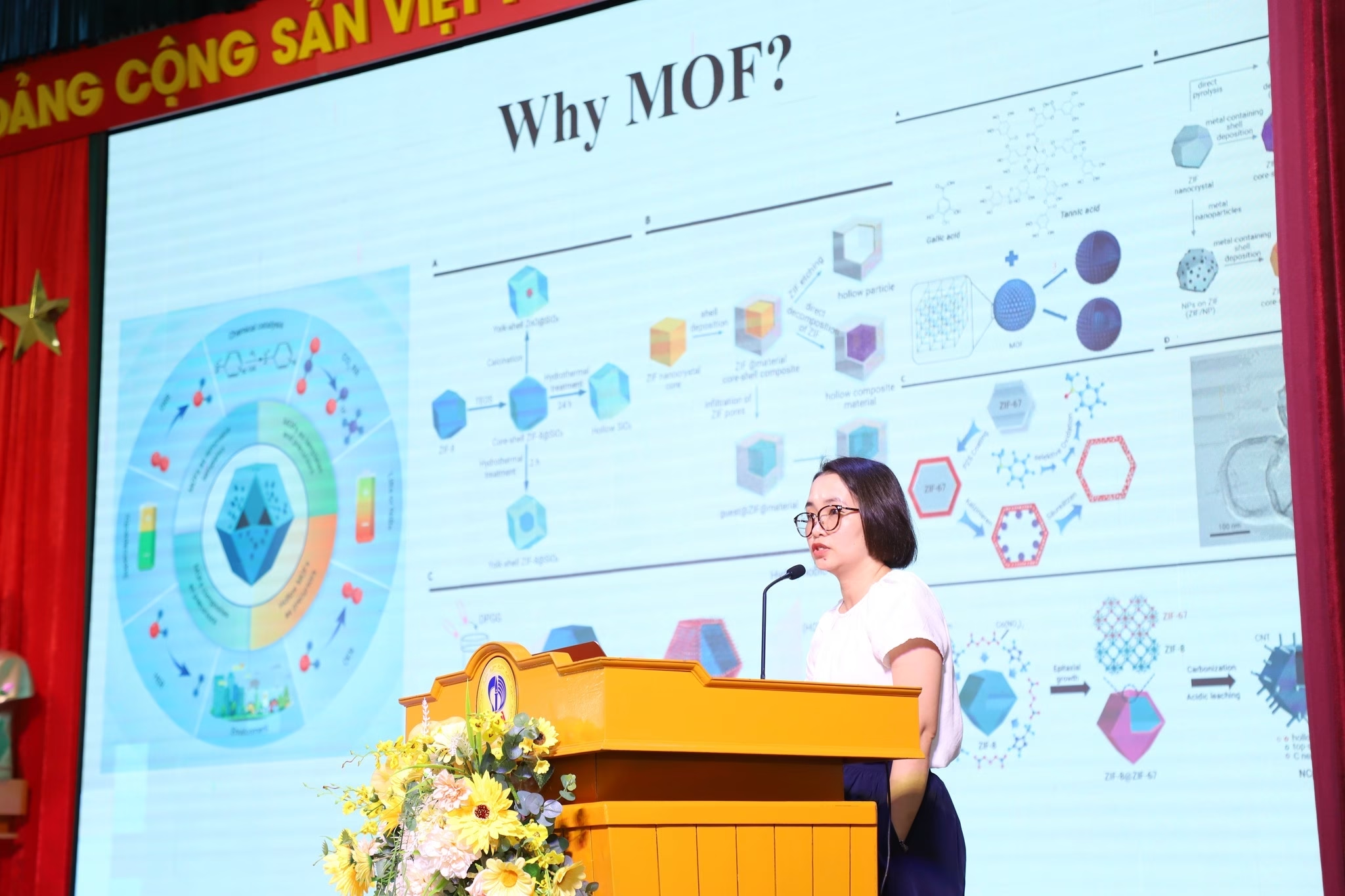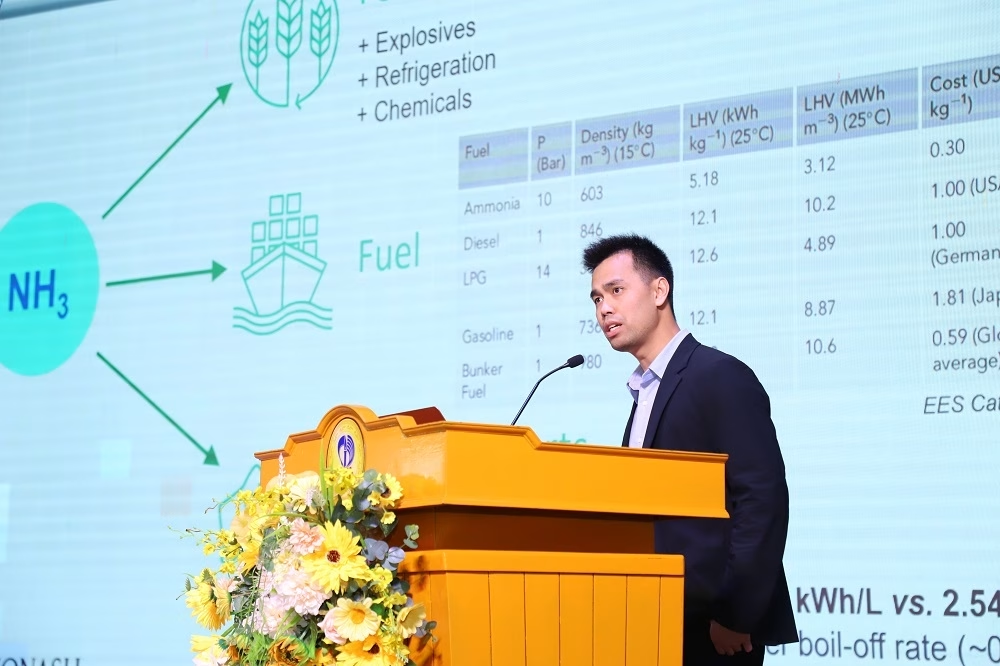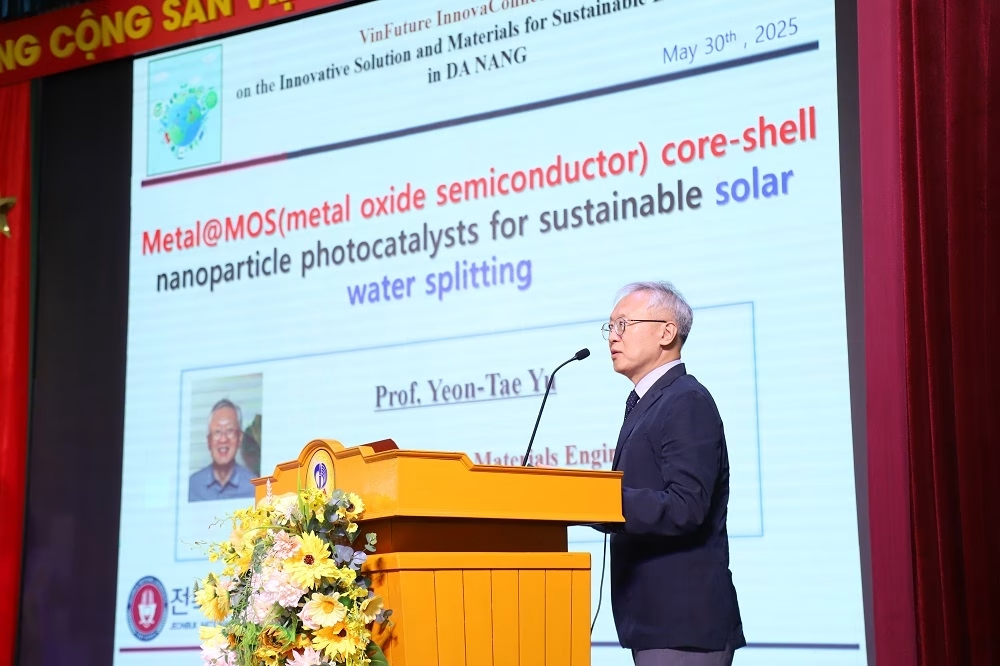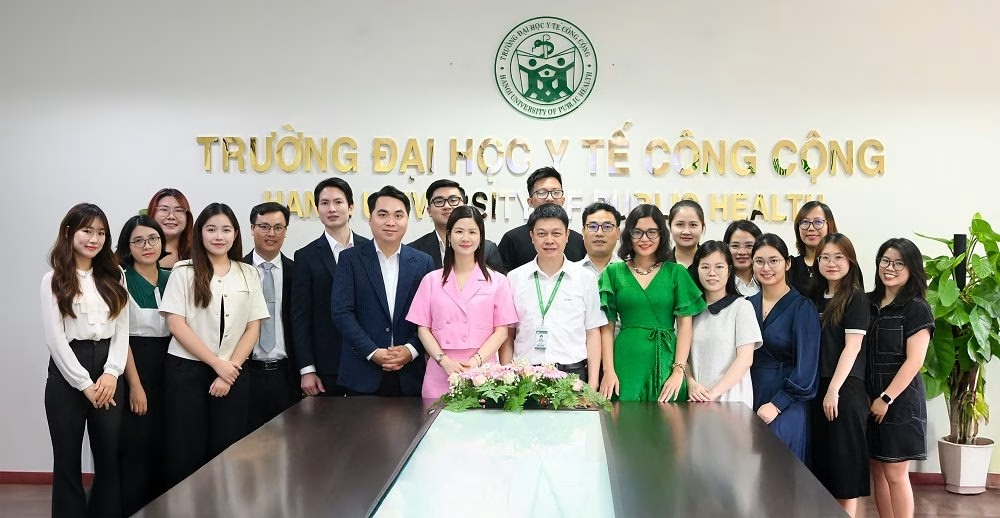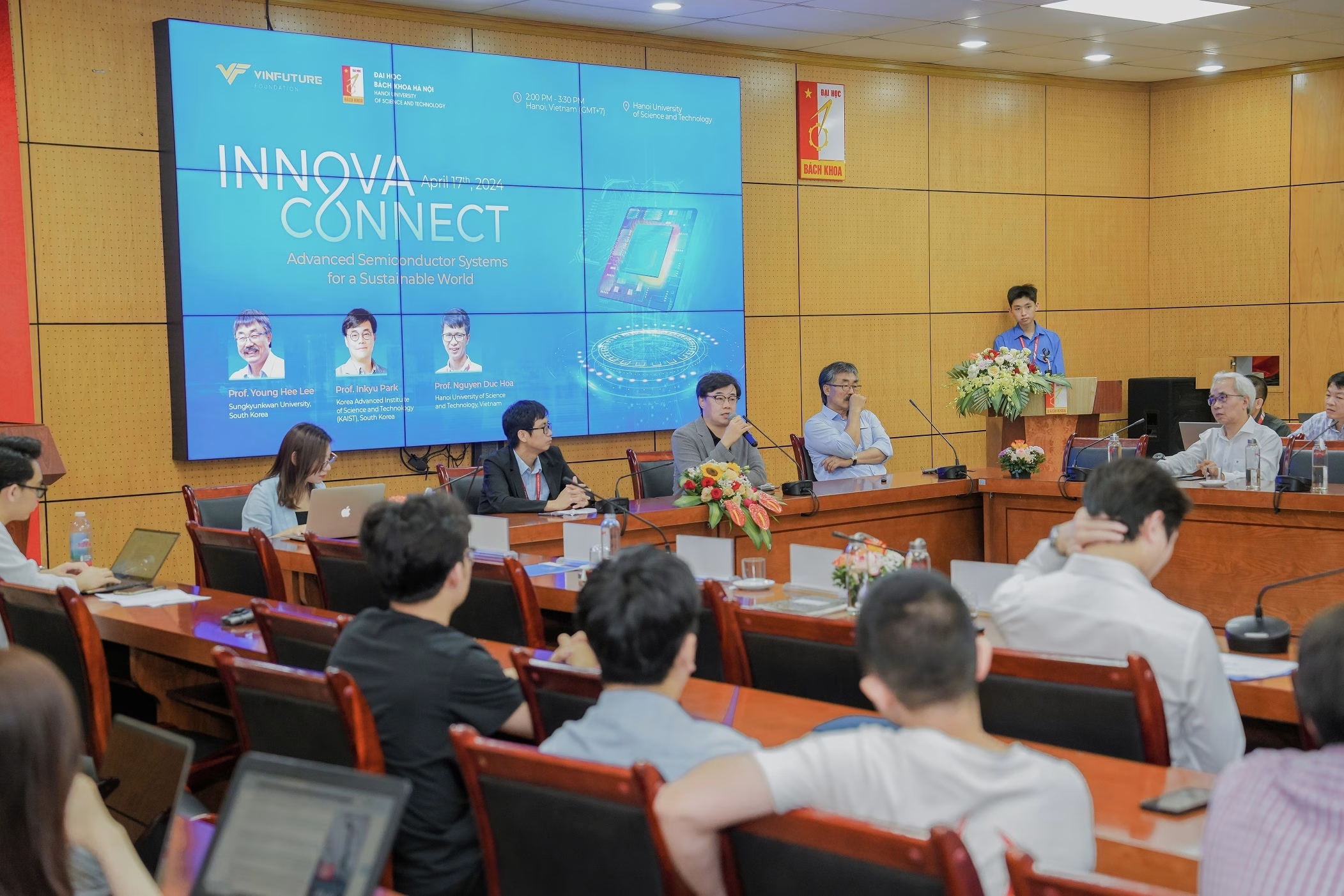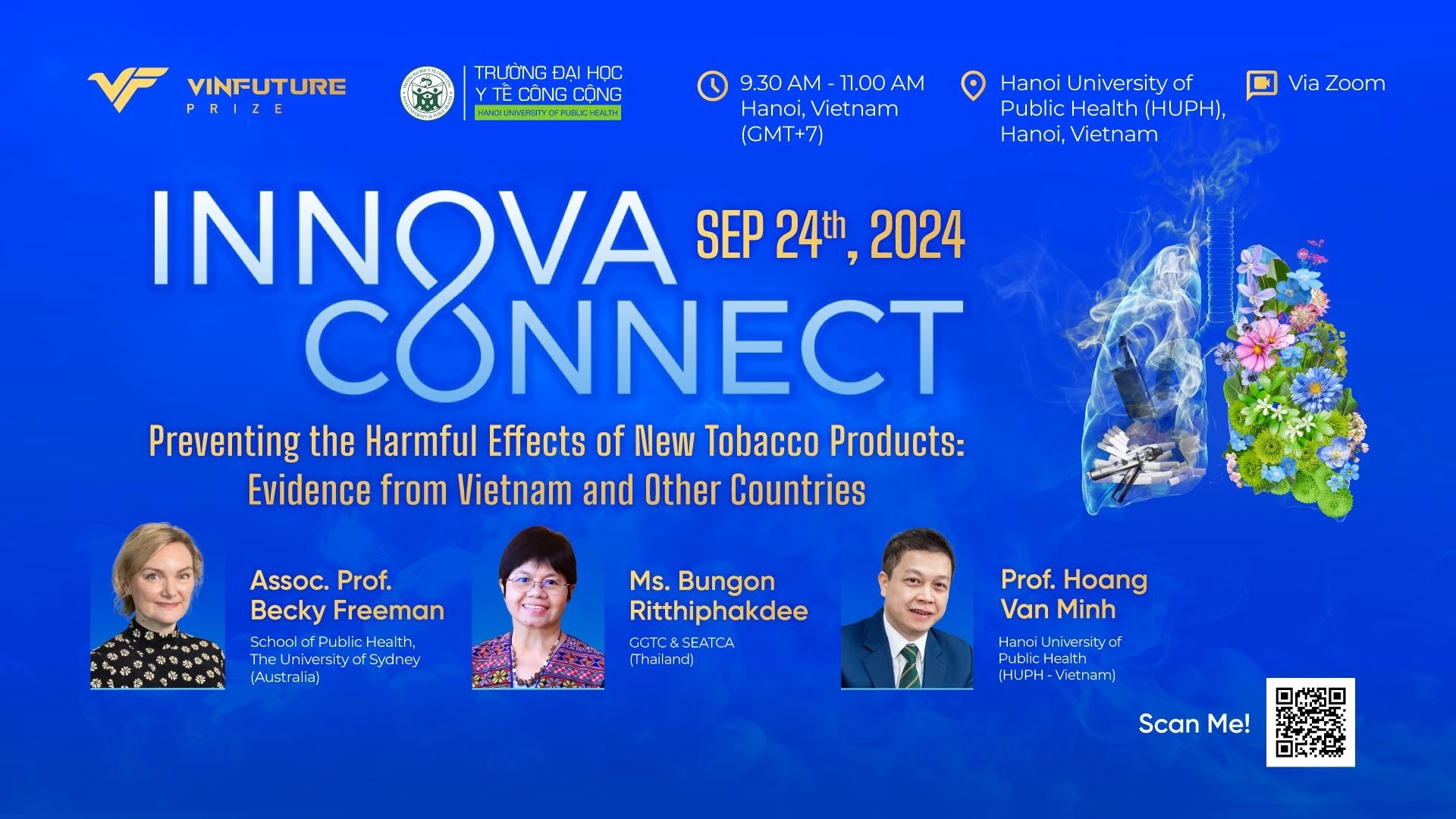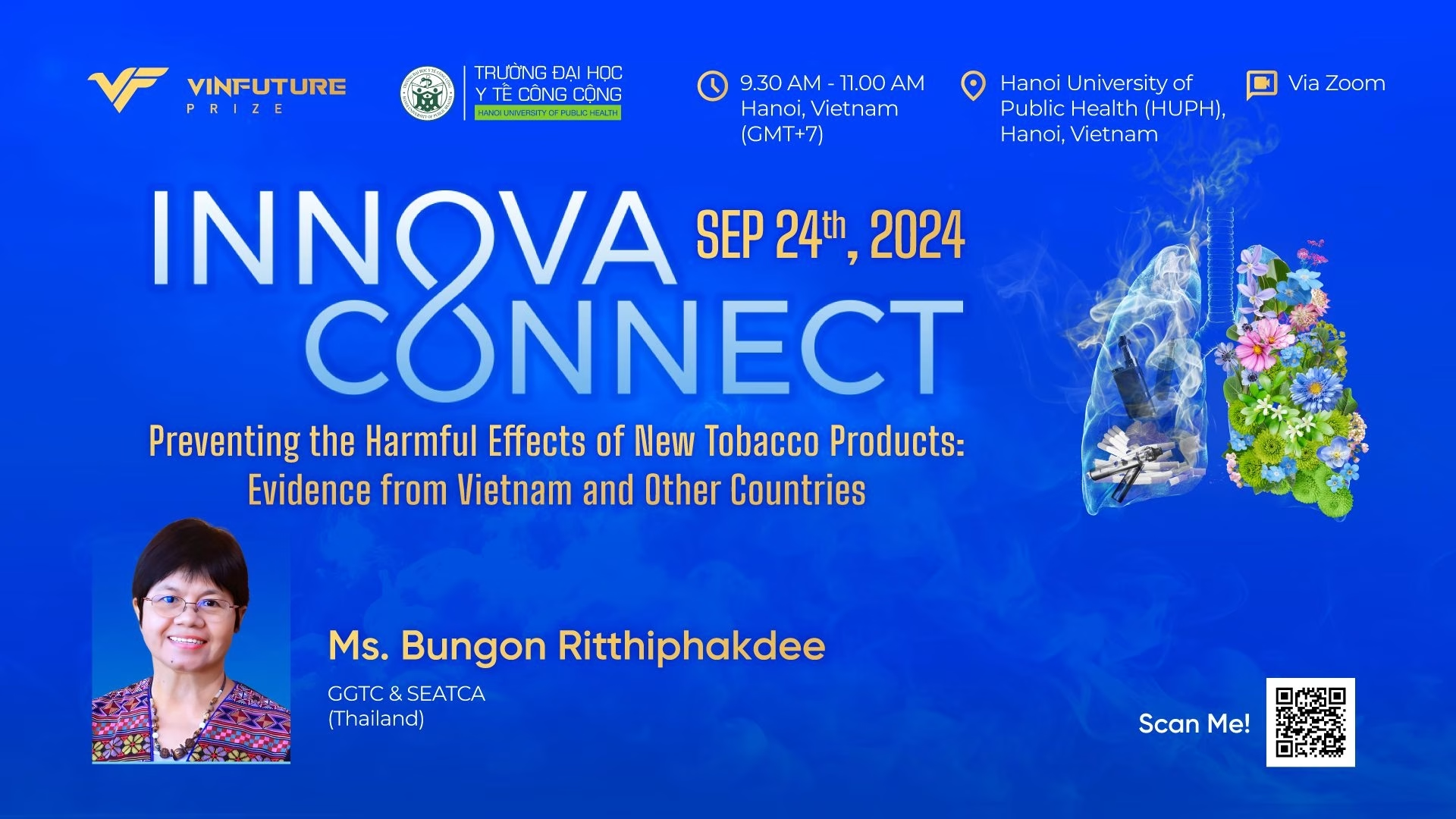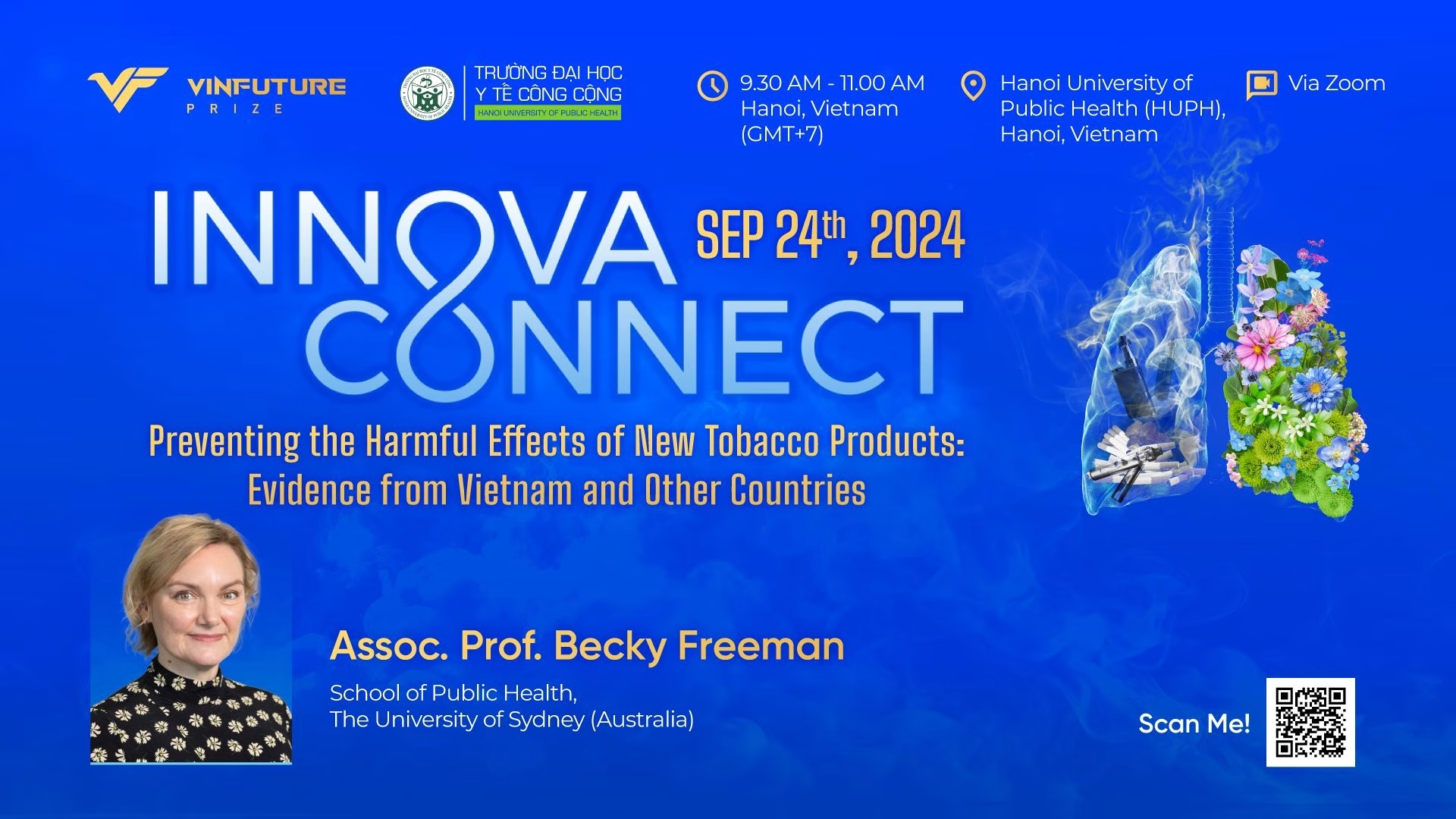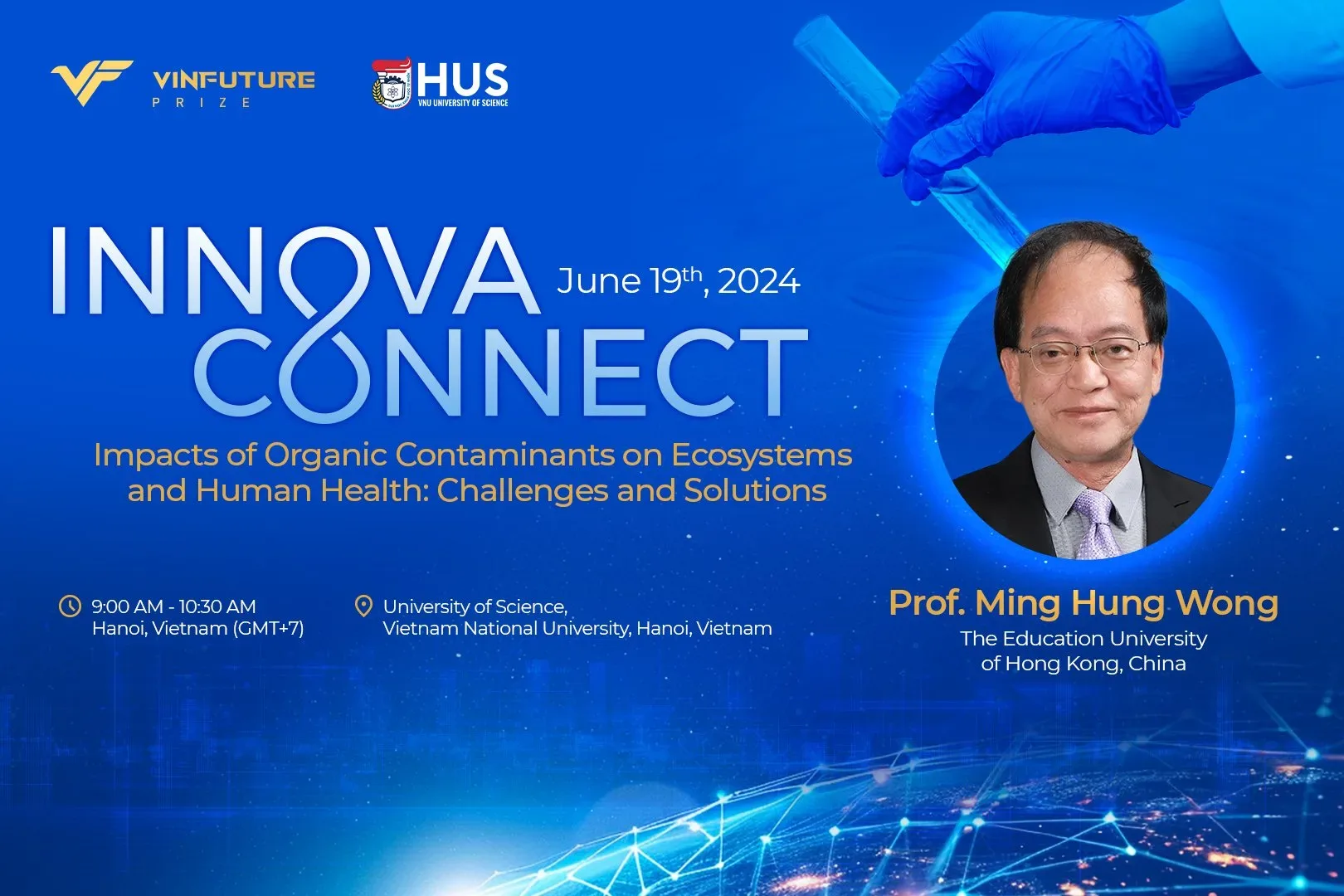Q: Could you explain what MOF materials are and why they’re generating excitement in environmental applications?
Assoc. Prof. Dr. Vo Thang Nguyen: Metal-Organic Frameworks are a group of materials with tremendous potential and many applications. This is indeed a very promising material group. The characteristic properties of this type of material include high porosity, and we can modify both the metal and the organic ligands that bind to the metal within the framework. Therefore, we can tune certain properties of this material for specific applications.
These materials are being researched extensively for several key applications. The first is adsorption, due to their large surface areas, which give them excellent adsorption capabilities. Second is catalysis, and third is gas storage. Regarding catalysis, for example, a small part of my research involves photocatalytic degradation to treat dye compounds, or electrochemical catalysis for water splitting to produce hydrogen gas. These are the applications currently being researched most extensively for this group of MOF materials.
Q: Your research takes a unique approach to MOF synthesis for Vietnamese Context. How does this differ from conventional methods?
Assoc. Prof. Dr. Nguyen: Our distinguishing characteristic here is that we can synthesize MOF on the basis of some waste materials that are not conventional materials – for example, fruit peels and other materials that have been discarded. We use these waste materials and incorporate MOF into them. We’re essentially combining MOF technology with recycling discarded materials for practical applications in real-world scenarios.
However, currently these studies only exist within the laboratory setting. The direction we hope for next is to integrate these materials into actual treatment systems after we have perfected the process and evaluated their properties thoroughly. We want to integrate these materials into specific wastewater treatment systems, for example, of enterprises producing dyes. That is our aspiration, but currently our research is primarily conducted at laboratory scale.
Q: What are the main challenges preventing MOF technology from scaling to industrial applications?
Assoc. Prof. Dr. Nguyen: This material also has some disadvantages, particularly regarding its stability under real-world conditions. For example, harsh pH conditions – very acidic or very alkaline pH environments, high temperatures, or instability in high humidity environments or when in direct contact with water. So the first major challenge is the stability issue – for practical application, the material must be durable under any real-world conditions.
The second challenge is that currently we haven’t progressed to integrating it into actual treatment systems. We’re conducting research at laboratory scale, but the most important thing for practical application is that we must integrate it into existing systems, for example, wastewater treatment systems that are already in place. This integration represents a significant challenge in transferring research from laboratory to practice.
Additionally, there are issues like reusability. After using the material for our purposes, we need to be able to reuse it so that we don’t discharge additional pollutants into the environment, which would add more contamination rather than solving the problem.
Q: Beyond wastewater treatment, what other breakthrough applications are you anticipating for MOF technology?
Assoc. Prof. Dr. Nguyen: We’re thinking about another direction for applying this material – CO2 storage from factory emissions. CO2 after being emitted from factory smokestacks will be stored in the material, then we’ll recover that CO2 and use it for another production process, for example, algae cultivation.
Currently at our university, there’s also extensive research on microalgae applications. This is an interdisciplinary combination from chemistry to biology. That’s another application direction for MOF that we’re considering. If successful, I think this will be a breakthrough example of transferring from laboratory to practice.
Q: The InnovaConnect event brings together experts like Dr. Hoang-Long Du and Prof. Yeon-Tae Yu. What collaborative opportunities do you see?
Assoc. Prof. Dr. Nguyen: My team and I very much want to expand our research interests to materials other than MOF. Dr. Du’s participation working on NH3 (ammonia) production processes – an alternative energy form to replace current fossil fuels, similar to hydrogen. Prof. Yu also researches materials, and their research directions have similarities with our research direction.
We are looking forward to collaborating on practical research projects following this InnovaConnect event, potentially with Prof. Yu or Dr. Long. Currently, I’m discussing with these scientists so that after the seminar we’ll have scientific research projects implemented between the parties. We don’t necessarily have to confine ourselves to MOF.
Through this event, we can open other research directions that are more feasible for practical application. I see the direction of creating NH3 (ammonia) as very potential and feasible for Vietnam’s current practice.
Q: Vietnam’s sustainable development roadmap emphasizes renewable energy, clean water, and green innovation. What policy support is needed to advance MOF technology?
Assoc. Prof. Dr. Nguyen: My expectation, as I’ve mentioned from the beginning, is that most importantly we must successfully apply achievements from laboratory to practice. To achieve this goal, I very much hope for policies that connect multiple sectors and fields, specifically connecting enterprises and universities in meaningful ways.
At large universities or in big cities, this type of connection is not particularly difficult to establish. However, at local universities or in regions like Central Vietnam where I work, policies are very much needed to facilitate connections across multiple sectors and fields, and to connect enterprises, universities, and researchers effectively.
We also want to promote investment specifically focused on applications – this is important to prevent research results from just staying on paper but ensuring they must be transferred to practical applications in actual production and industrial settings.
Finally, we want to continue what VinFuture has been accomplishing – bringing Vietnamese science to the world to be recognized and have some meaningful influence on world science. If there are specific policies designed for this field, the process of applying research results to practice will be significantly easier and more effective.
Q: What role do you see VinFuture Foundation and Vingroup playing in advancing Vietnam’s research capabilities?
Assoc. Prof. Dr. Nguyen: I think VinFuture and Vingroup have been doing this exceptionally well for a long time, actively participating in training high-quality human resources for the whole country, and I see that VinFuture has done this very well indeed. VinFuture also sponsors many projects, and I know these are mainly application-focused projects rather than purely theoretical research.
Basic research projects, while having some limitations, we very much hope that from basic research we can develop practical applications. VinFuture Prize, for instance, demonstrates how VinFuture has been and continues working very professionally and responsibly with the scientific community in bringing Vietnam’s image to the world as well as connecting world science to Vietnam in meaningful ways.
Q: How do you believe the nationwide expansion of the InnovaConnect scientific workshop will impact the Vietnamese scientific community?
Prof. Dr. Nguyen: The expansion of InnovaConnect beyond the capital Hanoi is a very positive signal for multi-regional development, multi-regional coverage of VinFuture, which is a good sign for scientific research at my university or in Da Nang. I think this fits with VinFuture’s vision and mission to honor and promote scientific research not just in one specific region but nationwide.
This is a very precious opportunity for my university, for research groups in Central Vietnam. For a long time, support activities have mainly focused on the two ends of the country like Hanoi and Ho Chi Minh City, but in Central Vietnam this is a rare opportunity for us.
